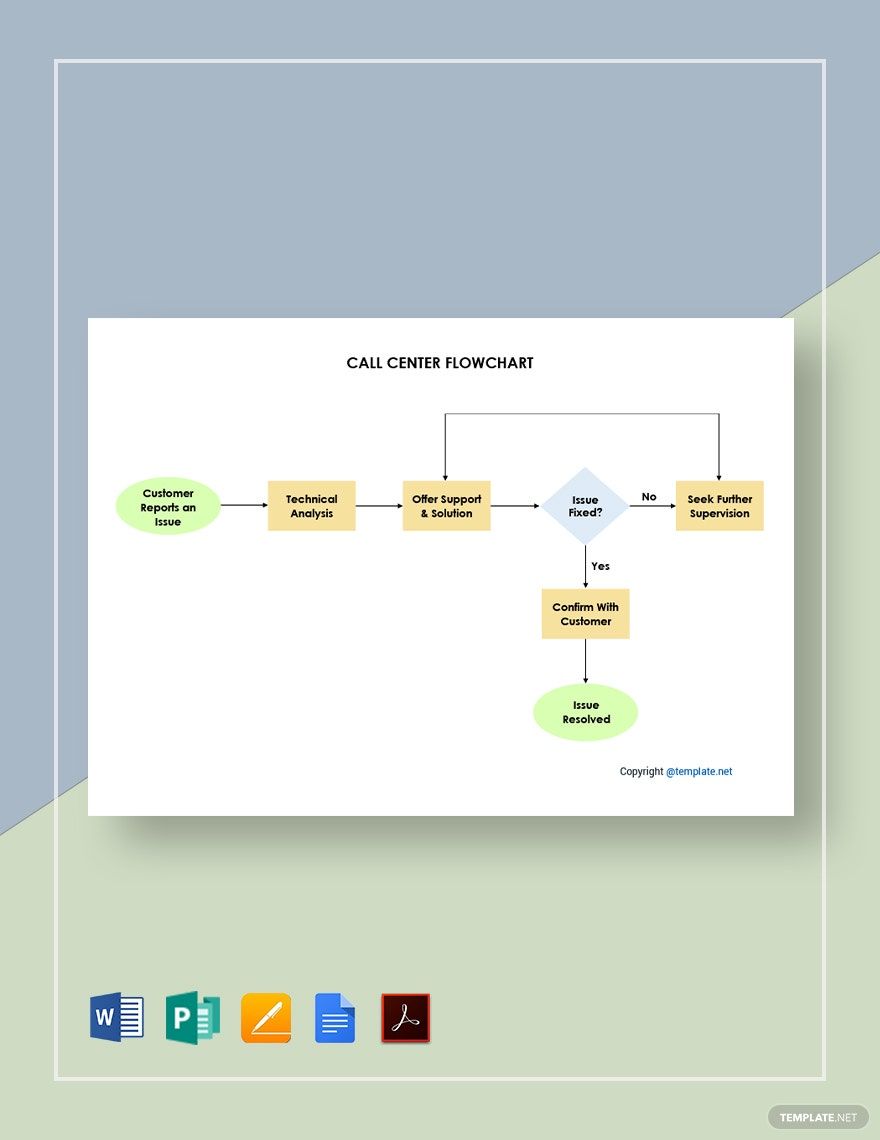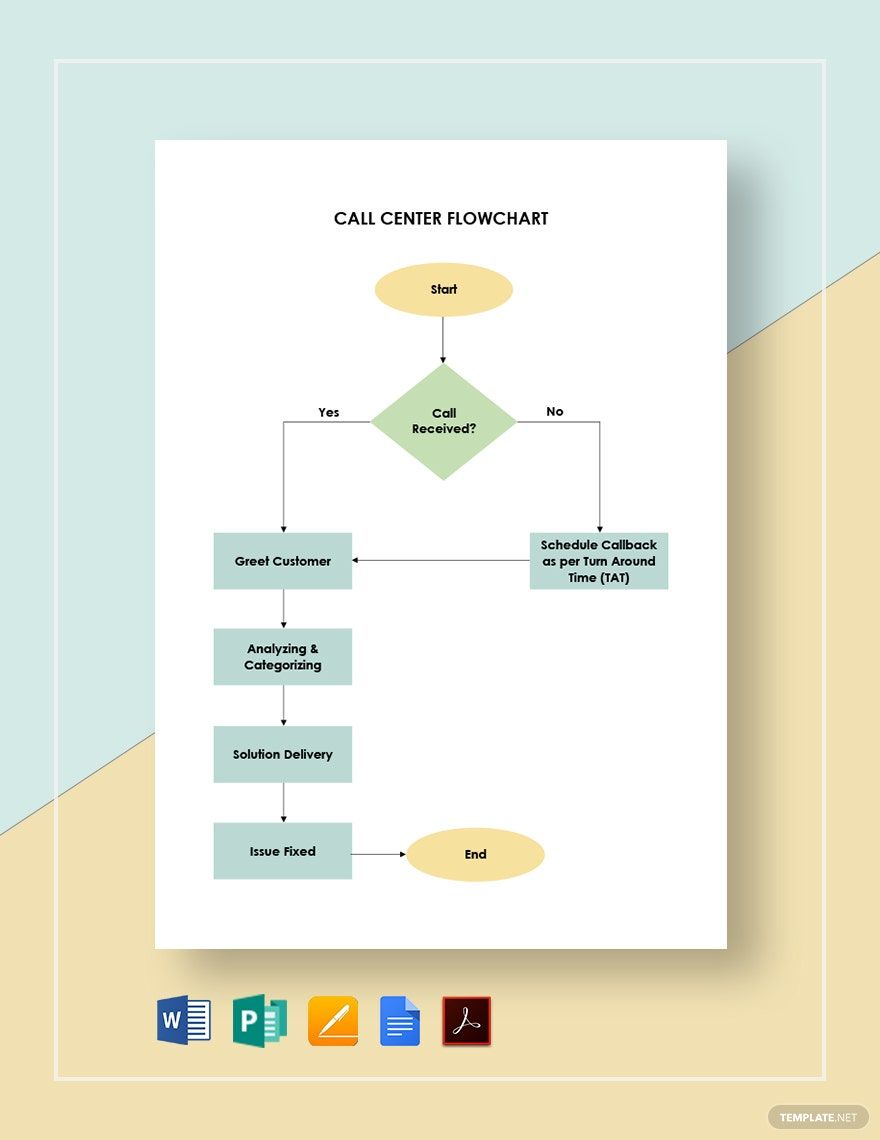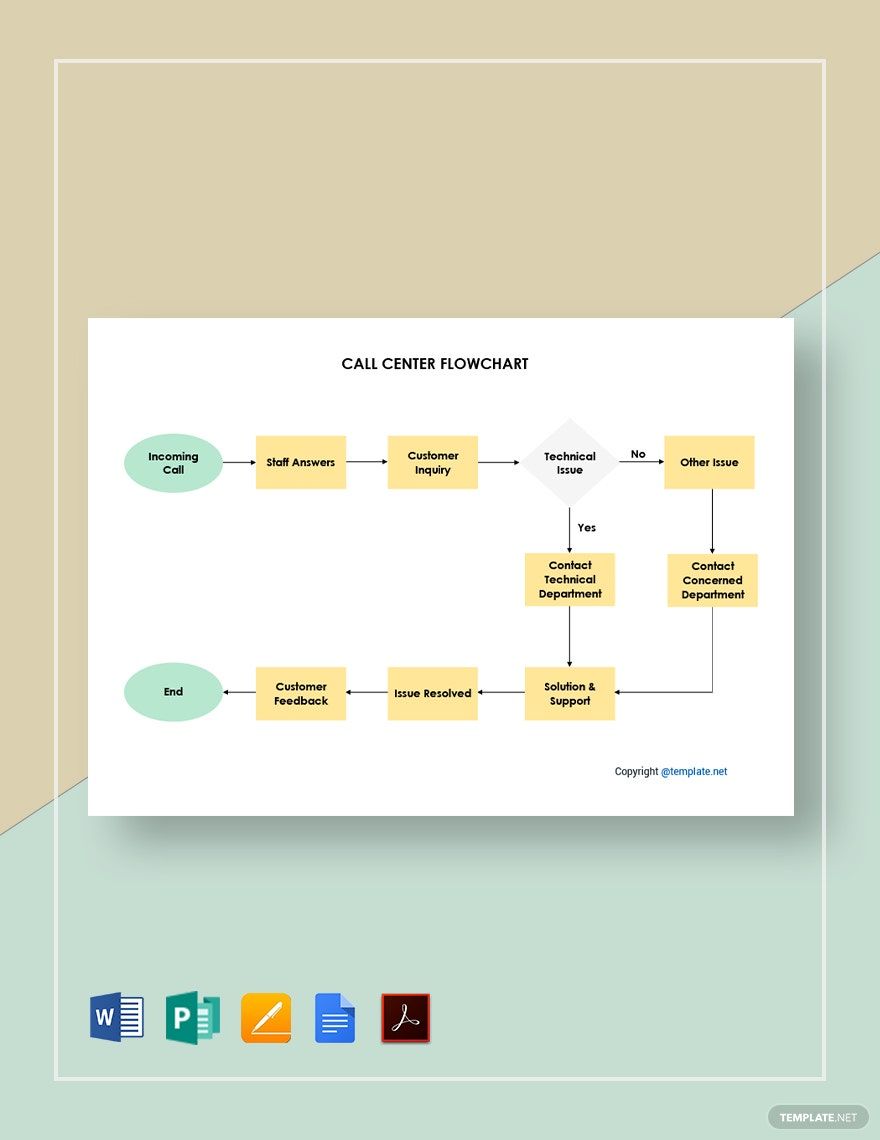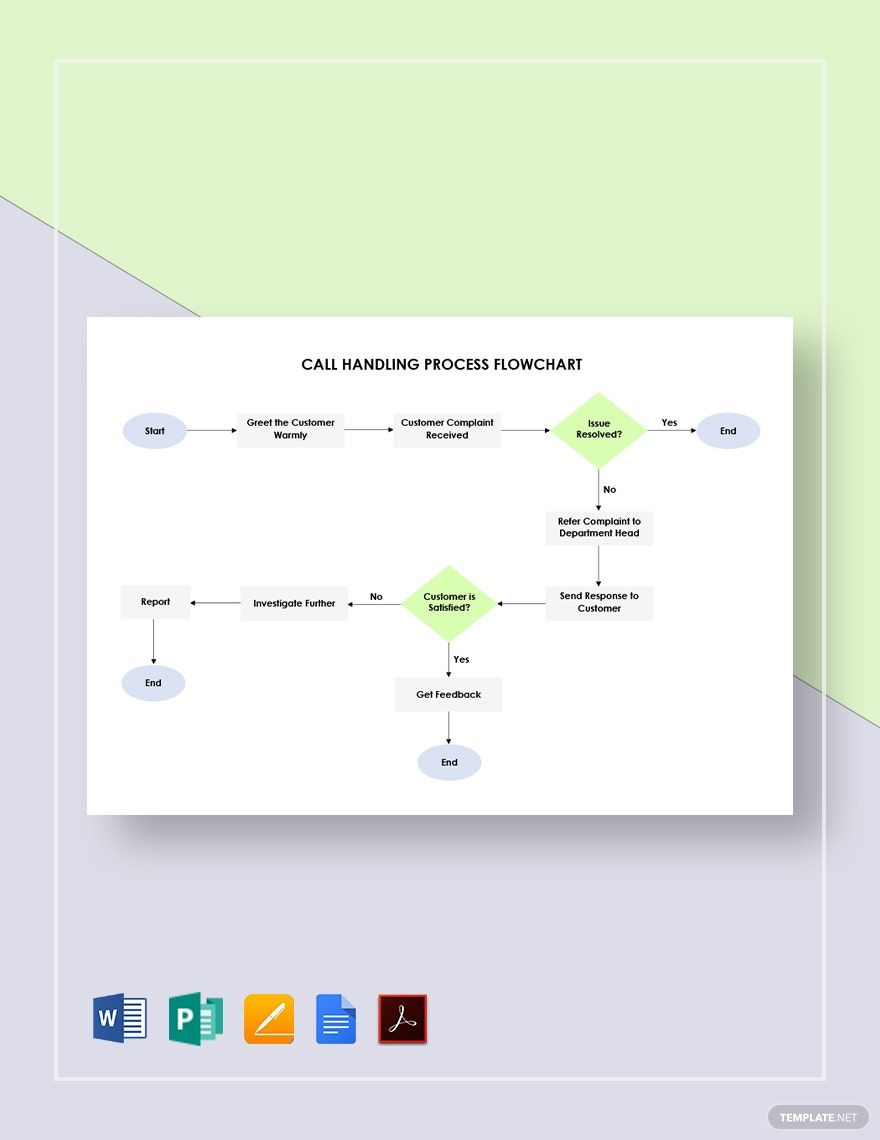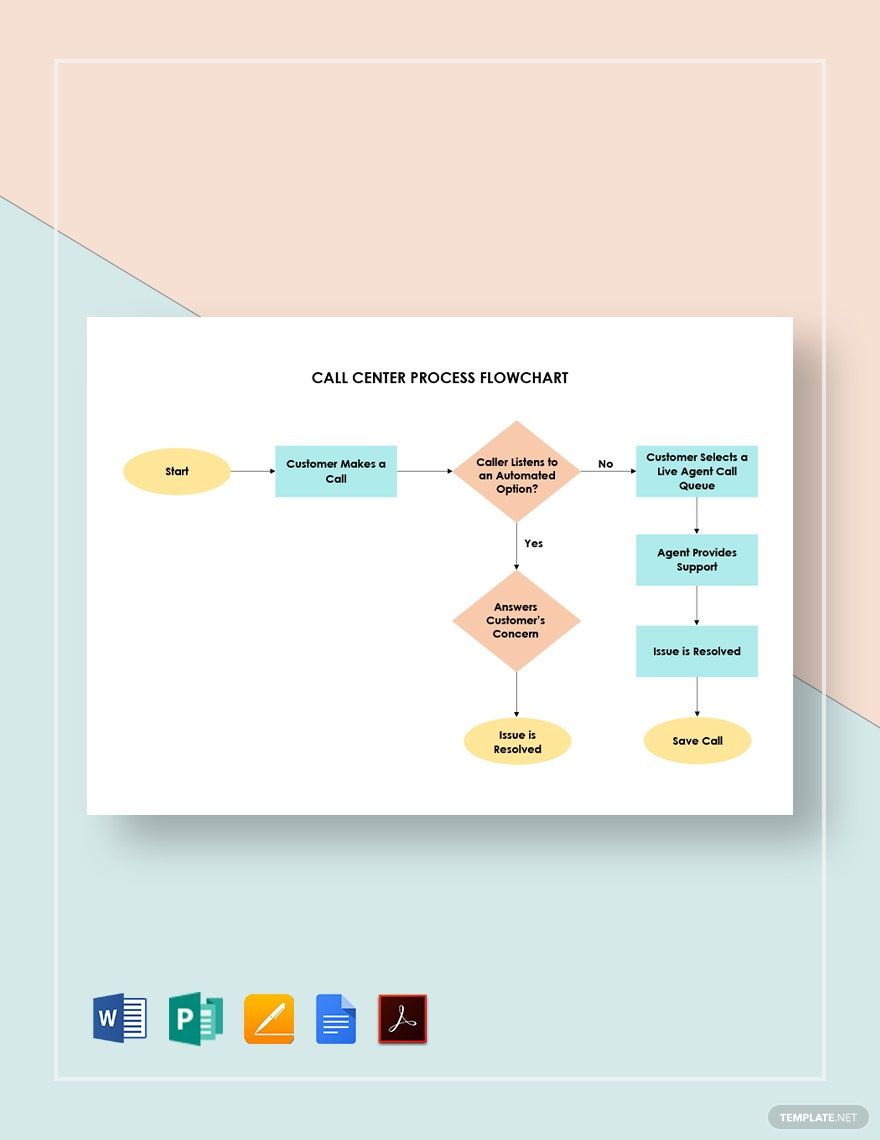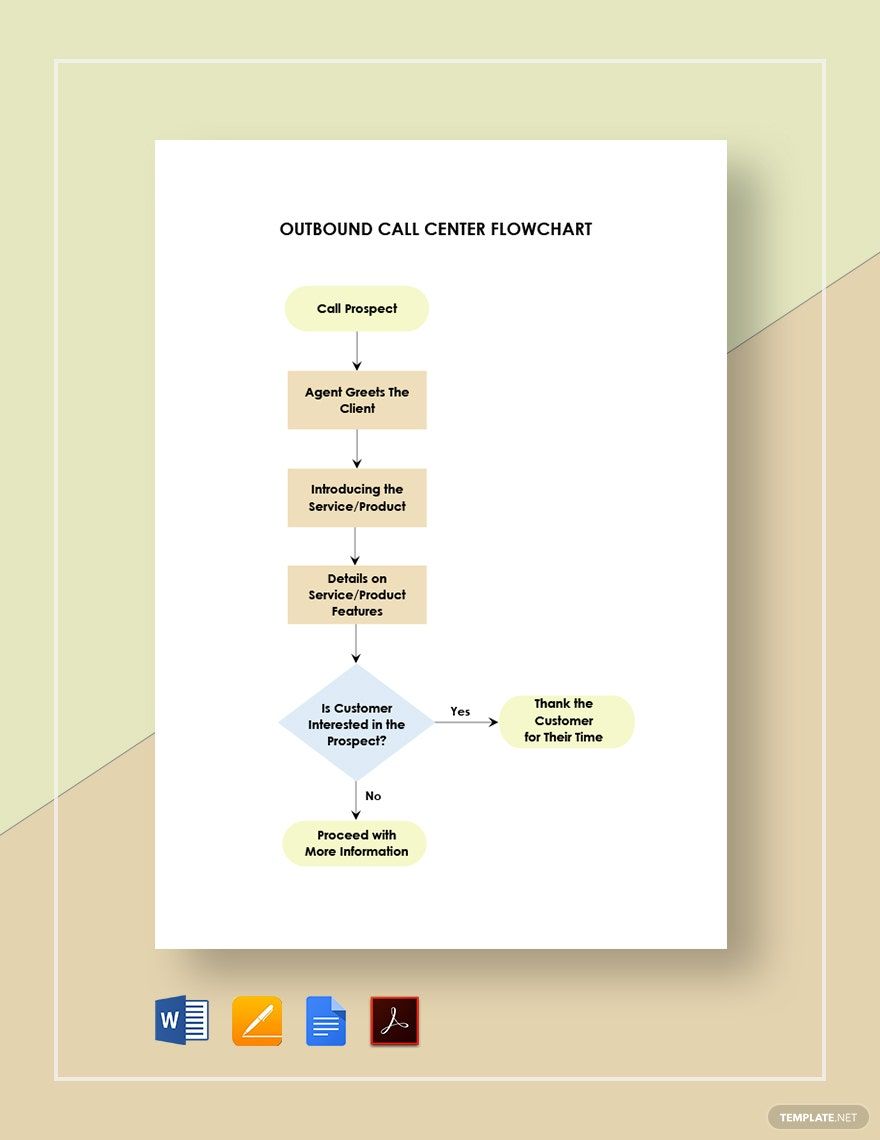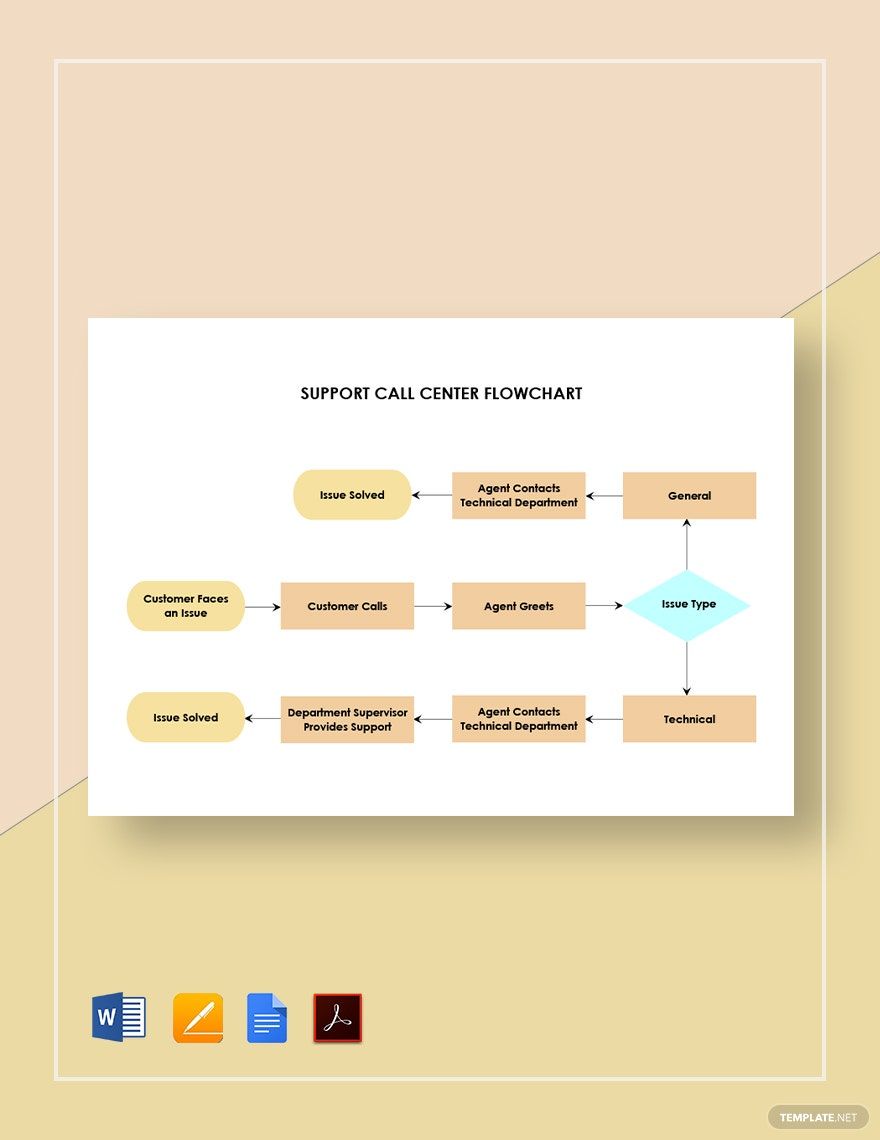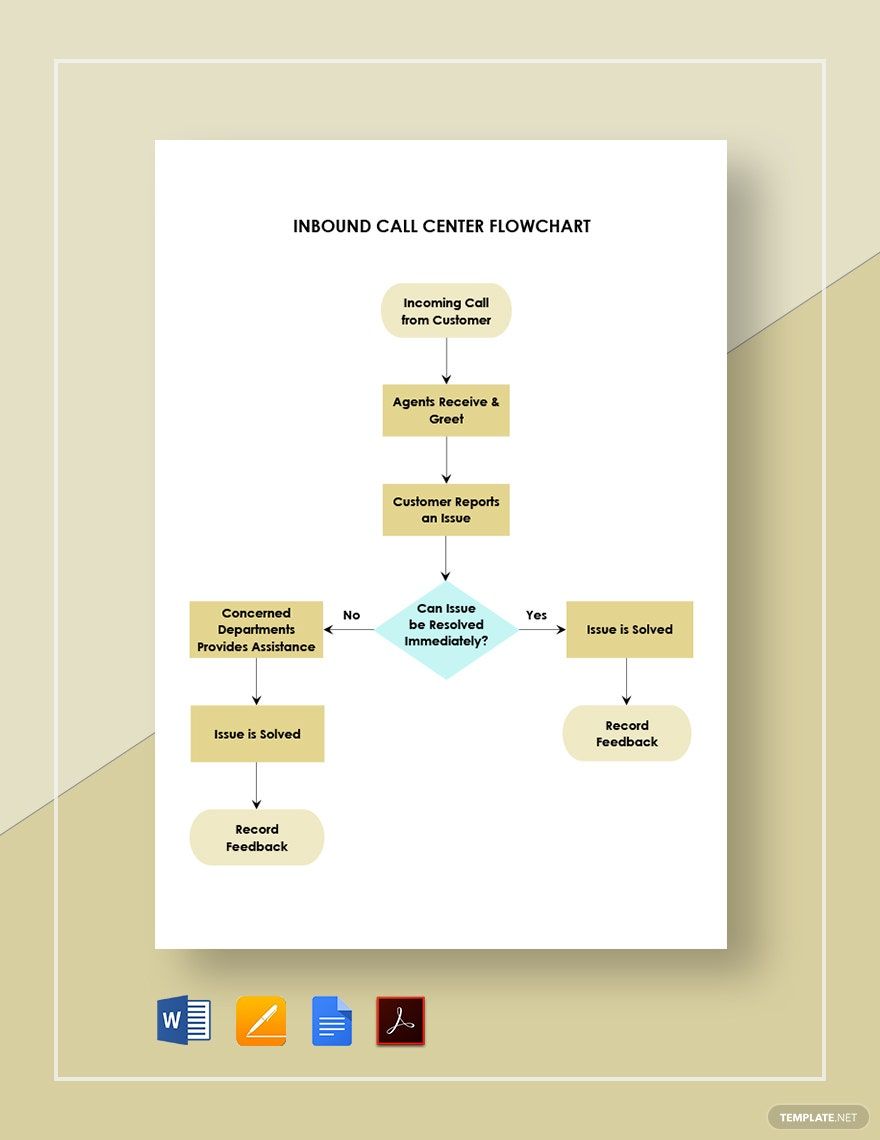Providing excellent customer service, which goes beyond the customer's expectation, can be achieved through establishing a quality standard of call flow relevant to every customer's issues and concerns. Showing empathy and getting to know the root cause of the problem should be accurate and appropriate, which you can compare to the time where you have created your customer service resume to land the job. Determining the right type of customer and identifying the issue with the relevant resolution marks a big difference in molding your call center flowcharts. The experience that you would deliver to your customer matter most and should be the priority in reaching every site metric. Achieving those goals is made possible through our 100% editable, highly customizable, and professionally-made call center flowchart. These flowcharts are available for download on any device with different formats: Microsoft Word, Apple Pages, Google Docs, Microsoft Publisher, and Adobe Photoshop.
How to make a Call Center Flowcharts in PDF?
Based on the recent study, Europe had the largest call center market in 2017, followed by the United States. The industry has been earning billions in gross revenue every year and serves as one of the primary sectors that contribute to the GDP index of the world. All call centers have it's own standard call center flowcharts in providing excellent customer service either through onshore or offshore service to increase their revenue. These flowcharts are the basis of the process when answering calls and making outbound calls. To reach each agent's key metrics, they were all provided with a new model of computer software where the customer's account was displayed.
Even a simple order placement needs a necessary flowchart to identify the root issue and provide a long-term resolution. To maintain excellent service, a Quality Analyst checked each call interaction from the call log sheet. That's why we're motivated enough to create a comprehensive diagram to improve the quality of service provided to the customer. We summarize the essential procedure that every specialist should follow.
1. Established Standard Call Flows.
Every call centers follow a particular call flow to provide quality service. These processes will reduce callbacks, reach average handling time, and increase customer satisfaction. Call flows are dependent on the type of account. Call centers offered several services with different call flows. Mostly pertained to telecommunications services, hotel and plane services, food delivery services, back-office services, payment security management, website and application support services, medical and hospital assistant services, and a lot more. You can create an initial customer service plan before adding them all together on your diagram.
2. Choose Inbound and Outbound Calls.
The process of providing quality service will depend on the type of calls every specialist would initiate. For example, Inbound calls are primarily used by customer service specialists, booking specialists, hotel reservations specialists, and all inbound call type inquiries. While Outbound Calls are somehow assigned to sales representatives and whenever further follow-up is needed to ensure accuracy of resolution provided from the initial interaction. Both call type has different call flows and procedures. Through identifying the type of calls and with the help of customer analysis, making a call flowchart is attainable. Also, we can assure that every customer received a fantastic service.
3. Answer the Diagram.
Put all necessary procedures on your diagram with the scenario-based situation that regularly happened during a call. In this way, every agent will be able to handle the inquiry effectively and efficiently. Providing each shape with scenario-based details would further improve the escalation process in your flowcharts. Sometimes, specific queries and issues require complicated brainstorming steps and critical thinking to resolve customers' problems. For this kind of call, you should provide an alternative short-term or long-term resolution based on the severity of the concerns to obtain a customer-friendly resolution on your flowcharts.
4. Recreate Arrows.
At this stage, you can connect appropriate steps with another step in your diagrams to achieve a cross-functional flowchart. This type of direction might be seen as complicated, but you can use the arrowheads to interconnect one situation to another step. For instance, the call started with a single account inquiry. Along the way, the customer experience some technical issues, you can connect them using an arrow to direct the customer over to another department. Through this strategy, you can resolve the concern efficiently, especially for complicated matters. If you have noticed, we have several cross-functional flowcharts as we firmly believe that providing customer service needs to become flexible and knowledgeable to modernize the ability we handle concerns. These flowcharts are highly editable, customizable, and manageable suitable for every inquiry.
5. Further Review & Print.
Reviewing each step in your flowchart helps to serve your customers better and could receive positive feedback and reviews right after the interactions. Enhancing your call handling techniques would help to reach the call metrics, and we could assure that excellent customer service is provided. Every print you've produced, bring a significant impact on the level of customer service. We've designed these flowcharts to cater to your business needs. We intended to create these flowcharts to fit different formats: Microsoft Word, Apple Pages, Google Docs, Microsoft Publisher, and Adobe Photoshop.
